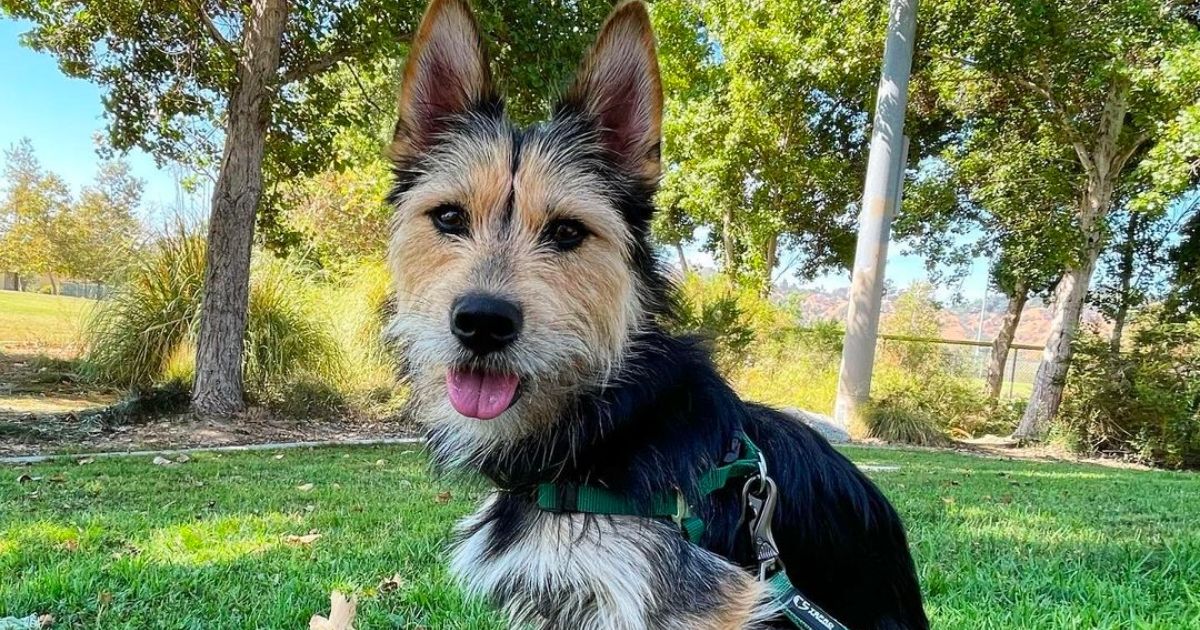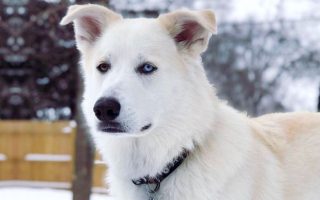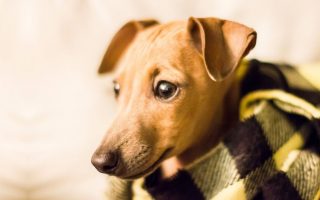Meet the Yorkie Husky Mix (also Yorksky), the result of a cross between the Yorkshire Terrier and the Siberian Husky.
It is notably a crossbreed that’s suitable for different kinds of people.
Both parent breeds are known for their strong spirit and energy, so expect the same from the mix.
The Husky and Yorkie mix is a relatively rare hybrid with an unclear origin, and what’s more controversial is the fact that both parent breeds are of different sizes.
One would wonder if it was necessary to crossbreed them, what the aim was, and how it was even possible.
Even more, one can’t be sure how these hybrid dogs will even turn out.
They do have the intelligence of their parents and some personality traits might be common, but when you combine two vastly different breeds, the genetic possibilities are numerous.
Let’s get into the details of the Yorkie Husky temperament, care guides, facts, and more, to unravel all you need to know.
Yorkie Husky Mixed Breed Information
| Height | 13 to 18 inches |
| Weight | 20 to 35 pounds |
| Life Expectancy | 12 to 14 years |
| Coat | Silky, Medium-length or Long, Double |
| Colors | Black, Tan, Agouti, Gray, Sable, Red, White |
| Temperament | Playful, Outgoing, Confident, Courageous |
| Ideal For | Active people, Owners with experience |
| Hypoallergenic | No |
| Breed Recognition | Dog Registry of America, Inc. |
| Puppy Price | $600 – $1,000 |
Yorkie Husky Mix Puppy Characteristics
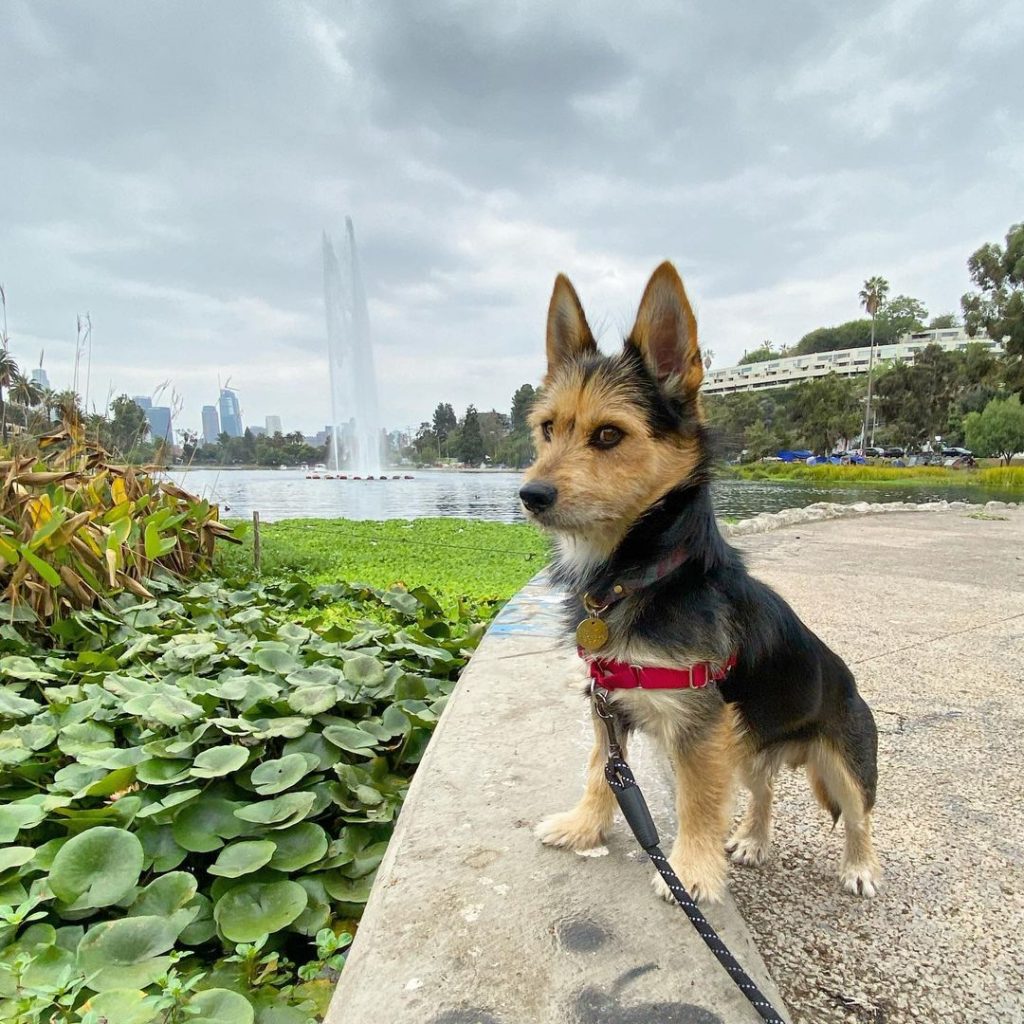
| Health | High |
| Grooming | High |
| Friendliness | High |
| Energy | High |
| Trainability | Medium |
The Parent Breeds
Yorkshire Terrier
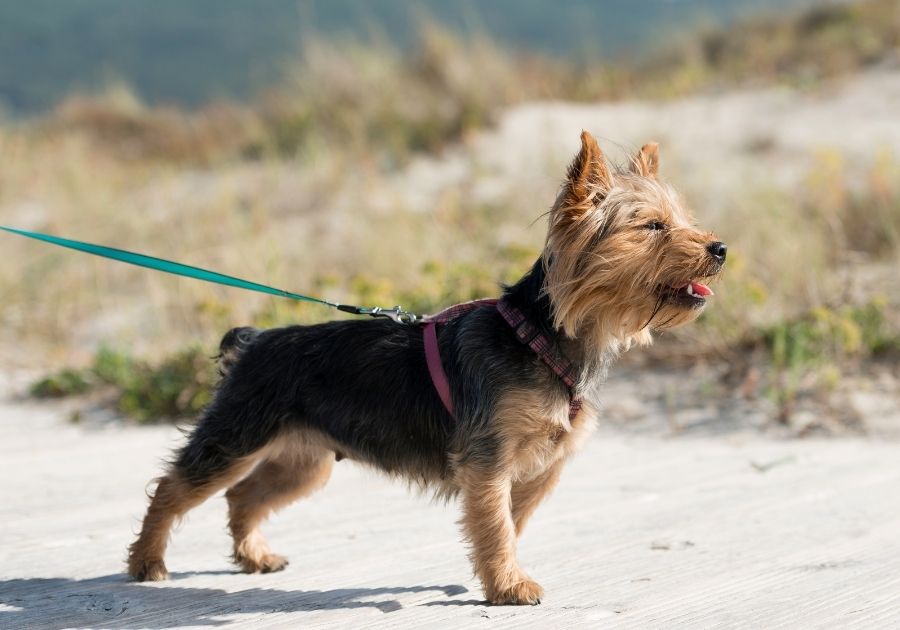
The Yorkie—as the Yorkshire Terrier dog breed is fondly called—is the most popular toy dog breed in the United States, winning many fans over with its feisty personality.
It originated in England and has since made its way to different countries.
1872 was the earliest record of a Yorkie showing up in the United States, but before then its story began with the Scottish visit to England during the Industrial Revolution.
They had with them a breed named the Clydesdale Terrier.
Alongside some other breeds which might have included the Waterside Terrier and the English Black and Tan Toy Terrier, the Yorkshire Terrier as we know it was bred.
It was recognized by the American Kennel Club in 1885.
The Yorkie’s coat is silky, long, and straight, presenting them as the perfect teddy bear dog.
The common color is black, and you may find some tan in there.
Similar to other toy breeds, the Yorkie stops short of 10 inches with its maximum being 9 inches. It also weighs between 4 and 6 pounds.
This breed acts proud sometimes thanks to its Terrier spirit, but it also has the affectionate nature of a true companion.
You could either find it cuddling with its owner or playing outdoors.
Siberian Husky
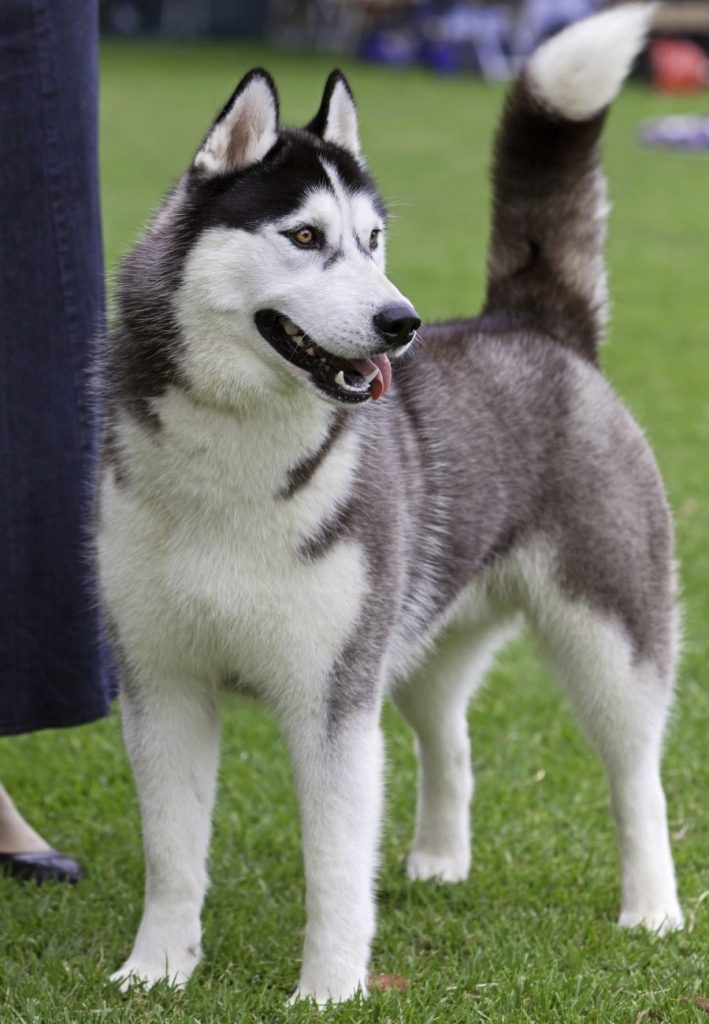
While the Yorkie was a companion from the onset, the Siberian Husky had other roles besides keeping humans company.
A native of Siberia, it was a mode of transport for the Chukchi tribe across the freezing Siberian environment.
Only after that did it play the role of a companion to the families.
The Siberian Husky found its way into the United States in 1908 during the Alaskan gold rush.
Right there it thrived and evolved into the breed we know today.
It was recognized by the American Kennel Club in 1930, the same year that the last Siberian Husky left Siberia.
Bigger than the Yorkie, the Siberian Husky is a medium-sized wolf-like breed that weighs between 35 to 60 pounds and grows as tall as 20 to 23 inches.
Its double coat was designed to protect it from cold, and it comes in colors like black, agouti, red, sable, and gray.
The Siberian Husky is friendlier than it looks, too friendly to be a guard dog.
It is also intelligent and energetic but can be difficult to train. You’d need the experience to handle it.
Facts About Yorkie Husky Mixes You Should Know
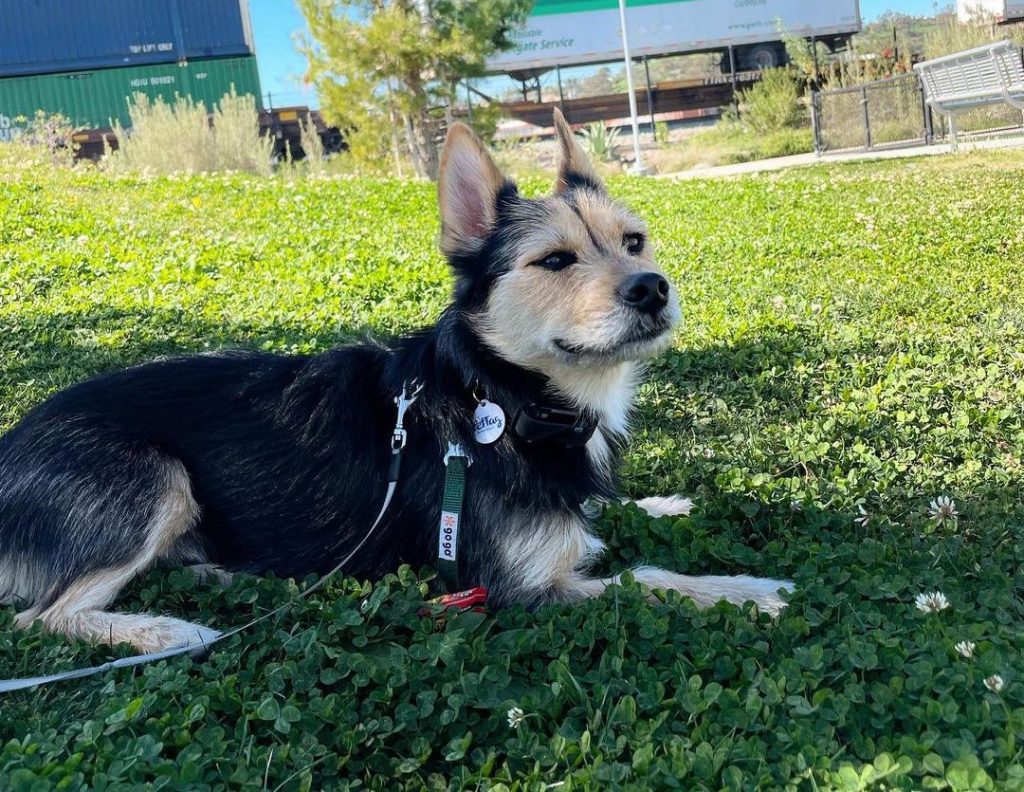
1. They are not hypoallergenic
No dog is fully hypoallergenic, but some are more advisable for allergy sufferers.
The Yorksky mix isn’t one of those—the reason being that it sheds massively when it inherits the Husky’s coat.
The progeny with the Yorkie’s coat won’t shed much, but it does have long hair which may not be safe for someone prone to allergies.
2. They are not ideal for new pet parents
This hybrid is also not the best choice for a first-time dog owner.
Both the Yorkshire Terrier and the Husky are highly energetic, a trait that may overwhelm the inexperienced.
The feistiness of the Yorkie and the stubbornness of the Husky also combine to give a mix that would be headstrong and not always willing to follow commands.
The owner must be firm, confident, and experienced to handle the Yorksky.
3. Yorkskies are good therapy dogs
The Yorksky can be trained to provide affection and therapeutic comfort to those who need it.
These include elderly ones, the anxious, the autistic, those struggling to heal from a physical or emotional injury, etc.
4. The crossbreeds are not borne through direct mating
Seeing as it will be difficult for a Yorkie and a Siberian Husky to mate, the mix is gotten by artificial insemination.
The semen of the male Yorkie is collected and put into the uterus of the female Siberian Husky.
It can’t be the other way round as the Yorkie cannot carry the mix.
5. The Husky Yorkie mix are called several names
Though it is commonly called the Yorksky, this mix also goes by other names, including the York Husky.
Husky Yorkshire Terrier Mix Appearance
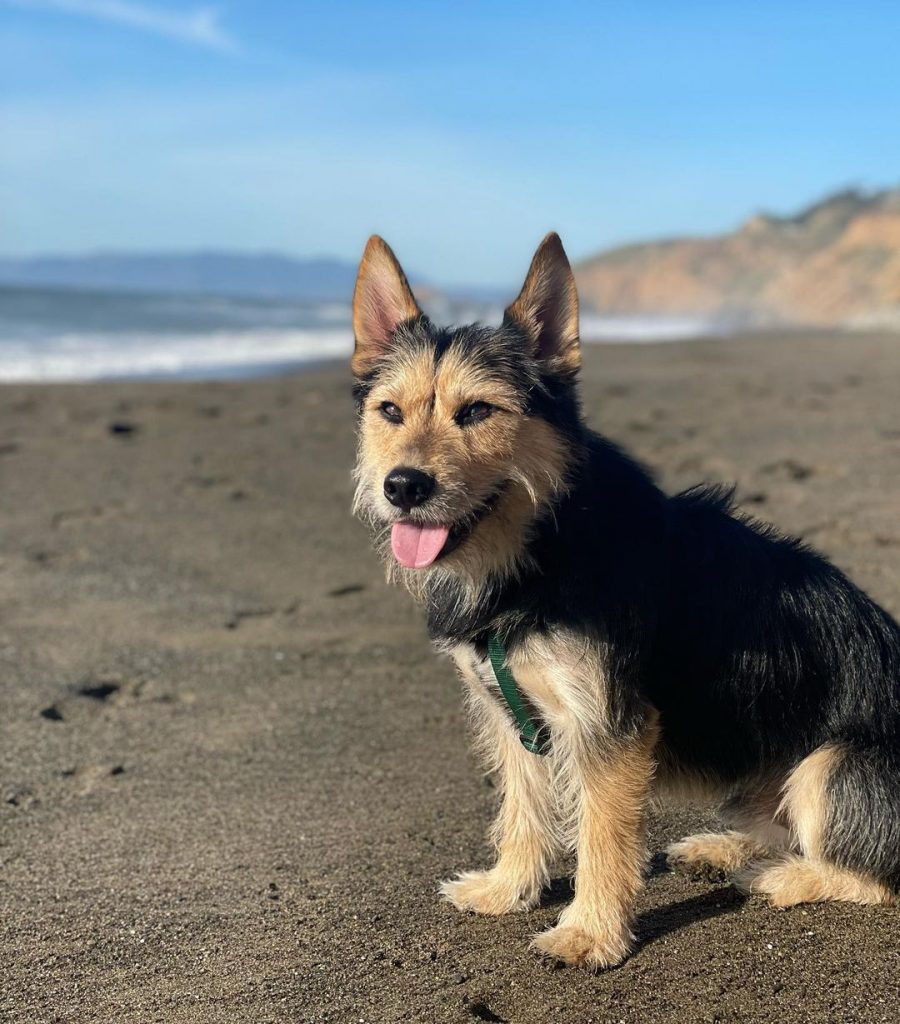
General Appearance
The genetic gamble happens more in the physical appearance of this mix than with the personality.
Many owners would prefer to see a combination of genes, where the mix would pick from both parents to create a unique look.
However, that’s not always the case. One parent could end up being more dominant than the other.
These uncertainties make the outcome hard to predict.
The Siberian-dominated offspring will have a proportionate head, blue striking eyes, and curved tail covered in fur.
It may seem wild, but its expression will be friendly.
Its counterpart with more Yorkie genes will have black eyes, a smaller head, and longer, erect ears taking the shape of a V.
How big does a Yorkie Husky mix get?
The size of this mix is also hard to predict because of the difference between both parents.
While the Siberian Husky is medium-sized, the Yorkie is a toy breed. We can only be sure that the offspring will fall somewhere in between.
A typical Yorkie and Husky mix full grown usually weigh between 20 and 35 pounds and often grows up to 18 inches.
Colors and Coat Type
As for the coat, it usually is somewhere in between the double, medium-length coat of the Husky or the long-haired coat of the Yorkshire. It’s also a gamble.
The coat colors can either be a solid color between black, tan, agouti, gray, sable, red, white, or mixed.
Yorkie Husky Mix Temperament & Behavior
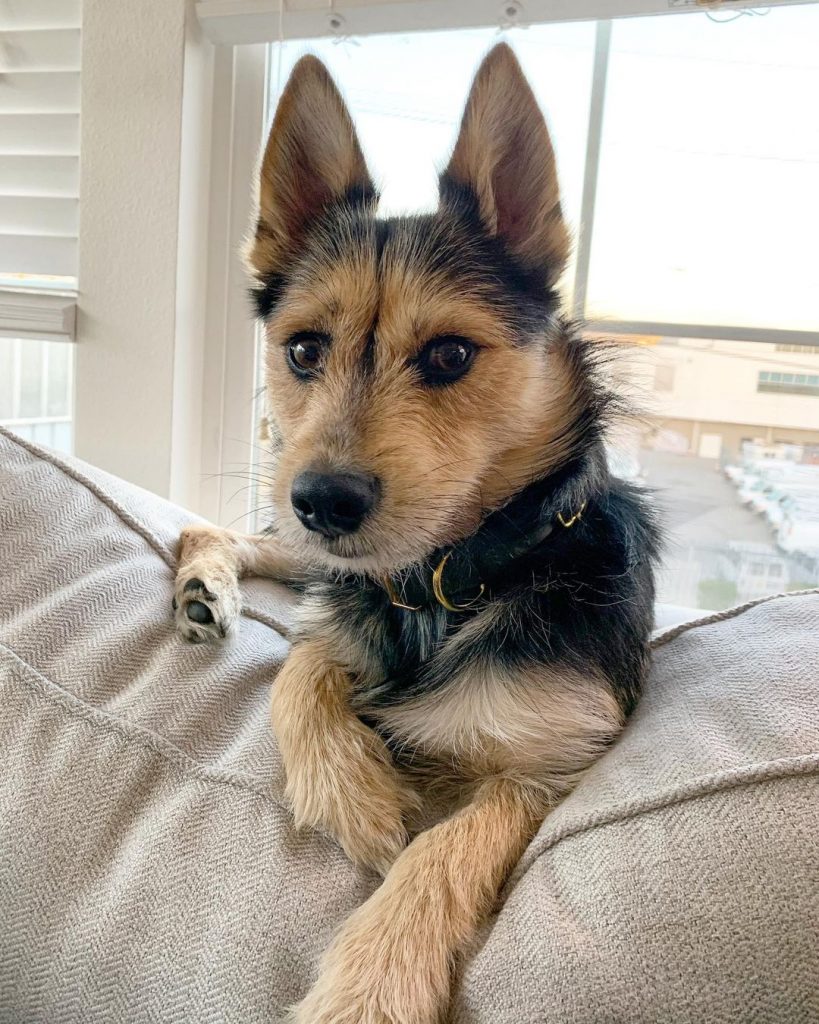
The Yorksky is usually known to have an extroverted personality but can be sometimes wary of strangers because of its Yorkie side.
It is affectionate, loyal, and playful.
The Husky side of the mix can balance out the wariness we spoke about, so it shouldn’t be hard to socialize it.
Both parent breeds love attention, so the progeny will too. It won’t enjoy being left alone and will do the most to get its owner’s attention.
The mix should also be exercised enough as it is energetic. It loves the outdoors and can make a good partner for anyone who is outdoorsy.
With enough exercise, the Yorksky can make a good apartment dog.
You do need to train it not to bark as the Yorkie parent is yappy, a trait that might be carried on.
Speaking of training, you must learn how pack dogs behave to be the alpha.
The stubbornness of this mix will worsen if it doesn’t see you as a leader. The Husky parent is a pack dog, after all.
Fortunately, the mix is very intelligent and can learn with ease, as long as you can subvert its strong-headed nature.
Are Yorkie Husky Mixes Good Family Dogs?
This hybrid has parents that have successfully been companions to many families. This gives the Yorkie Husky mix a good shot at being one too.
Unlike some other companions, however, this Mix is not for everyone.
Its relationship with kids is an example. While the Husky is good with kids, the Yorkshire Terrier is not tolerant with toddlers and may snap.
Therefore, it is best to have the Yorkshire Terrier Husky mix dog in a home with grown kids.
Are They Good With Other Dogs & Pets?
Good socialization can get the Yorksky to relate well with other dogs, especially those it sees as pack members.
It may not be friendly with outside dogs, however. When introduced early, it can also cope with cats and other pets.
How Much Does a Yorkie Husky Mix Puppy Cost?
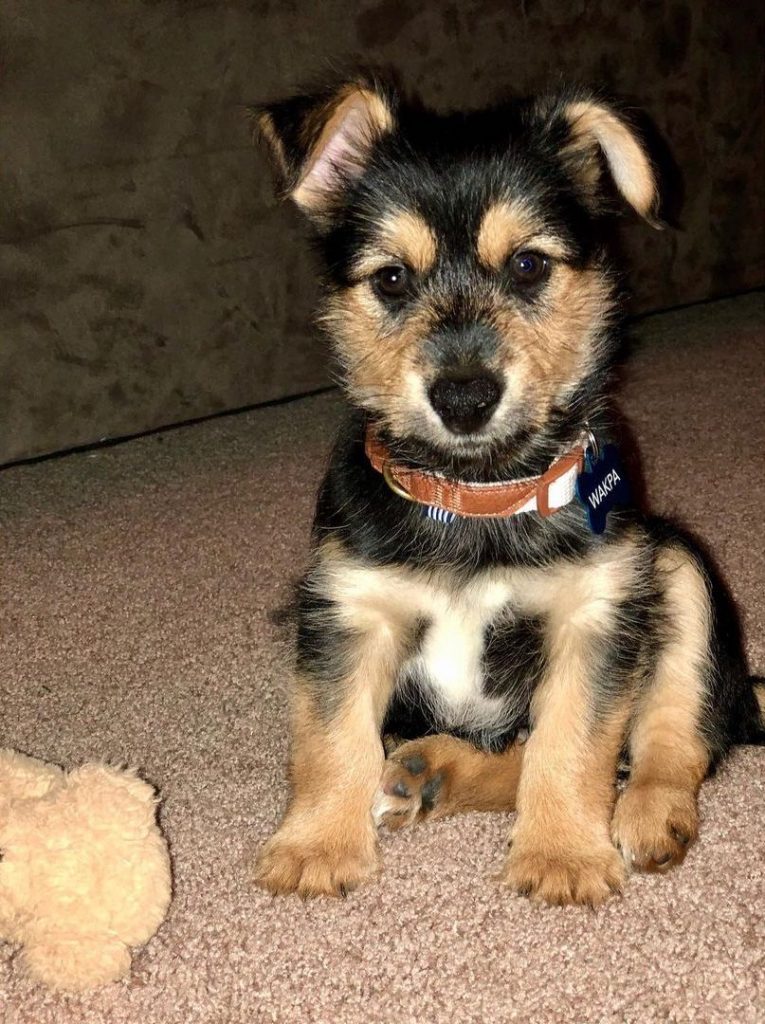
The Yorkie Husky is relatively rare, despite having popular parents.
Your only chance at locating one for sale is seeking private breeders who sell Yorkies or Huskies.
You might have to do some research, call, and even take a trip to another city. But if you think it’s worth it, then put in the effort.
There isn’t a fixed price for this hybrid as it will depend on many factors.
Generally, the breeder sets the price according to what they spent in breeding and taking care of the puppy.
That said, we estimate from research that the cost of a Yorkie Husky mix for sale would be around $600 to $1,000.
You might be lucky to find a breed that’s cheaper than that, but don’t be too eager to get one because you made a good bargain.
Cheaper puppies might have several issues. Also, be wary of any ‘teacup’ size.
While they look cute, the vet bills they cause won’t be as adorable.
When you get a breeder, be sure they are a good one by asking important questions like the diet the puppy has been on, the parents that were involved, and their medical statuses.
A good breeder will also show you the environment where the puppies are kept.
Ensure that it’s neat and that no puppy is displaying signs of any contagious disease.
The second option is adoption. It is cheaper, and while there is also no fixed adoption price, you can budget for it from the parents.
The Husky’s adoption price falls between $100 to $350 while it can cost up to $400 for the Yorkie.
The mix should find itself somewhere in between. Ask proper questions too before proceeding to adopt.
Yorkie Husky Mix Food & Diet
There isn’t enough information on the feeding requirements of this mix, so a veterinarian or nutritionist is essential to get the right feeding plan and the proper diet.
That said, we can get an idea from the feeding needs of both parents.
The Siberian Husky is a picky eater, so obesity isn’t usually an issue for it.
It probably got this instinct from its early days as a sledder when it had to cope with a limited ration.
A diet fit for a medium-sized dog is suitable for it, and such a diet should contain vital nutrients like:
- Protein
- Omega 3 fatty acids
- Minerals
- Vitamins
The Siberian Husky as an adult eats 1.5 to 2 cups, twice a day. Veterinarians recommend a diet of 80% dry food and 20% wet food.
The Yorkshire Terrier should also be fed twice a day as an adult and 3 to 4 times as a puppy.
The cups should be ¼ to ½, and dry food is more recommended. Some Yorkies are as picky as Huskies, others eat well enough to be obese.
Thus, the mix might not be prone to obesity, but it shouldn’t be free-fed.
A combination of dry and wet food will be fine, with the occasional treat. Encourage the picky ones to eat, and be sure to give enough exercise.
The dirt should contain all major nutrients, but the cups depend on the individual size. This is where expert advice is needed.
Related:
10 Best Dog Food For Huskies (Review & Feeding Chart)
Exercise Requirements for a Yorkshire Terrier Husky Mix
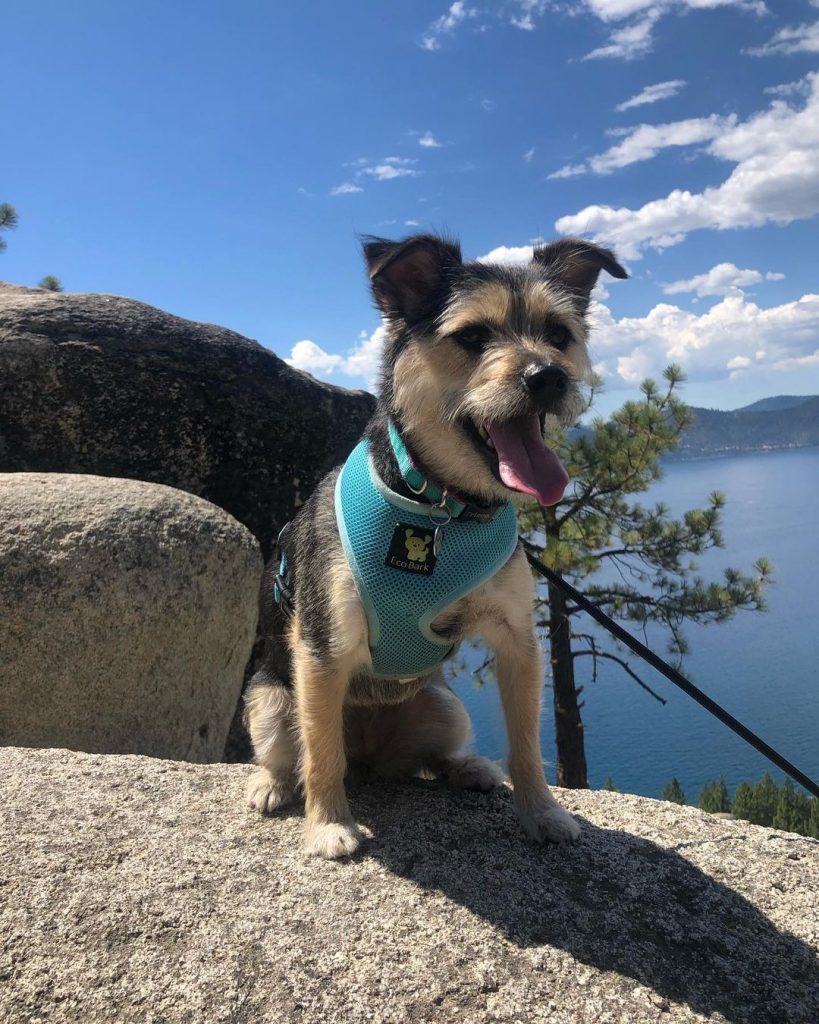
Both the Yorkshire Terrier and Siberian Husky are energetic, but their exercise need varies because of their size.
Knowing what the parents need will help you figure out how to exercise the offspring.
The full-grown Siberian Husky has a high exercise need and can go for more than 2 hours.
This isn’t a breed for the laid-back, and it will not do well without sufficient exercise.
It gets bored easily, so you should change activities and spread the exercise throughout the day.
The Yorkshire Terrier can be satisfied with a minimum of 40 minutes of exercise.
Two walks of 20 minutes and some playtime can keep it calm for the rest of the day.
It can’t do without exercise too and may turn destructive if neglected.
Where does the Siberian Husky Yorkie mix fall?
A good suggestion would be to find a timing that’s somewhere in between since its size is neither 100% Husky nor 100% Yorkie.
Then you can observe to know if it needs more time or less. Remember that puppies and seniors don’t need as much exercise as adults.
In addition to physical activities, add some mentally stimulating activities for this intelligent mix. It could double as training or be for fun.
Crack your fingers here, cos this mix can be a challenge.
Stubborn and feisty, it is sure to give you a hard time while remaining proud.
That said, its loyalty and intelligence can work to your advantage, as long as you know what to do.
Setting yourself as leader of the pack is the first process, especially for a hybrid with a pack dog parent breed.
There are many steps to achieve this, like eating before your dog does. This communicates that you are in charge.
It shouldn’t also sleep on the same bed with you as that could put you both on the same level.
Failure to assert yourself as the leader will lead to it trying to take your place.
The above step and all other forms of training should start early enough, ideally as soon as you bring your pup home.
Housetraining is important as it would spend time indoors. If you live in an apartment, you should also curb its barking tendencies.
Obedience training and socialization are important too.
Teach it some simple commands that it can grasp with ease and repeat till it responds.
Try to make each session interesting or it’ll get bored. As for socialization, this involves taking your pooch to new places and new sights.
As with other breeds, positive reinforcements surpass harsh corrections.
Use praises and treats to keep them motivated and cooperative.
Grooming Needs for a Yorkie Mixed with a Husky
Both parents have a high grooming need, and you’d need a lot of effort if you want to take care of the coat of the mix by yourself.
Whether it tilts towards the Husky or the Yorkshire Terrier (or combines both), it needs regular brushing.
It would also shed moderately, so have a vacuum cleaner on standby.
You can also get it trimmed by a groomer if it has the Yorkie’s long hairs.
Bathing should be done once every 3 to 4 weeks. Do not over bathe your Yorksky as that would reduce the oil on its skin.
Get a good shampoo that’s suitable for the skin. Flea treatment is important too.
Trim its nails on your own or get it trimmed by a professional groomer. Check its ear and eyes too.
Though the Yorksky is not vulnerable to ear and eye infections, it isn’t impervious either.
Give its teeth regular brushing to maintain dental health and keep the teeth clean.
Yorkie and Husky Mix Health & Conditions
The Yorksky has a relatively long life span that gets up to 14 years.
It doesn’t fall ill easily, and a well-bred pooch will stay healthy for long.
A regular veterinarian checkup is important, and this should be done once a year. Regular care is a must, as well.
However, there are some health problems this hybrid may fall victim to. These conditions include:
Reverse sneezing
Also called ‘back sneezing’, it happens when the dog inhales air through the nose, then snorts and wheezes.
It is relatively harmless, but be frightening to the dog. Stay close to it and get it to calm down.
Usually, it doesn’t require any medical treatment or a visit to the veterinarian.
Collapsed Trachea
Collapsed trachea, as the name goes, occurs when the trachea crashes.
The common symptoms of this illness include coughing, breathing difficulties, retching, vomiting, and wheezing.
It can progress to an emergency, so it needs immediate treatment. The veterinarian could prescribe medication for coughing.
You can also take some preventive measures like using a harness while on a walk.
Hypoglycemia
Hypoglycemia occurs when there’s a drop in the blood sugar level.
The common symptoms include weakness, loss of appetite, and even trembling.
Treatment would be focused on raising the blood sugar level to its normal rate.
Patellar Luxation
Patellar Luxation usually affects small dogs. It occurs when the kneecap shifts from its normal position. Left untreated, it can lead to lameness.
The symptoms include limping, pain in the legs, nonchalance towards any form of physical activity, and even swelling.
Fortunately, it can be treated. It could involve physiotherapy and a controlled form of exercise.
Eye conditions
This mixed breed is susceptible to some eye issues like progressive retinal atrophy, cataract, and Glaucoma.
The causes and symptoms of these conditions are different, but they have some similarities.
They all would affect the vision of the ailing dog, might cause swelling, redness, or a discharge of a watery substance.
A cataract would cause a white cloudy substance to cover the lens. Treatments may vary.
Portosystemic liver shunt
This can either be present at birth or show up later in life. It occurs when the blood vessels develop abnormally and disrupt normal blood circulation in the dog’s body.
The symptoms of this illness include stunted growth, weak muscles, diarrhea, frequent urination, and vomiting. It could even cause seizures.
Some diets and medications help in treatment.
What is the best mix with Yorkie?
Besides the Husky, the Yorkie has been mixed with many other dog breeds.
One of the most common mixes is the Morkie – a Maltese Yorkie mix.
What’s a good breed to mix with a husky?
Several breeds have been mixed with Huskies so get some interesting hybrids.
These include the American Pit Bull Terrier, the German Shepherd, the Rottweiler, and the Pug.
Wrap Up
The Husky Yorkie mix is one of many designer breeds that have come about from many breeding experiments.
No one knows what the purpose of the breeders was, but this mix has come to stay, to the delight of the families that own it.
Give it the care it needs and watch it remain a devoted household pet to you.
Other Yorkie and Husky Mixes You May Like:
- Labsky
- Boxsky
- Great Pyrenees Husky Mix
- Samusky
- Beasky
- Chihuahua Husky Mix
- Dalusky
- Shiba Inu Husky Mix
- Husky Pug Mix
- Husky Bulldog Mix
References & Notes
Featured Image by @frankie.wanders

